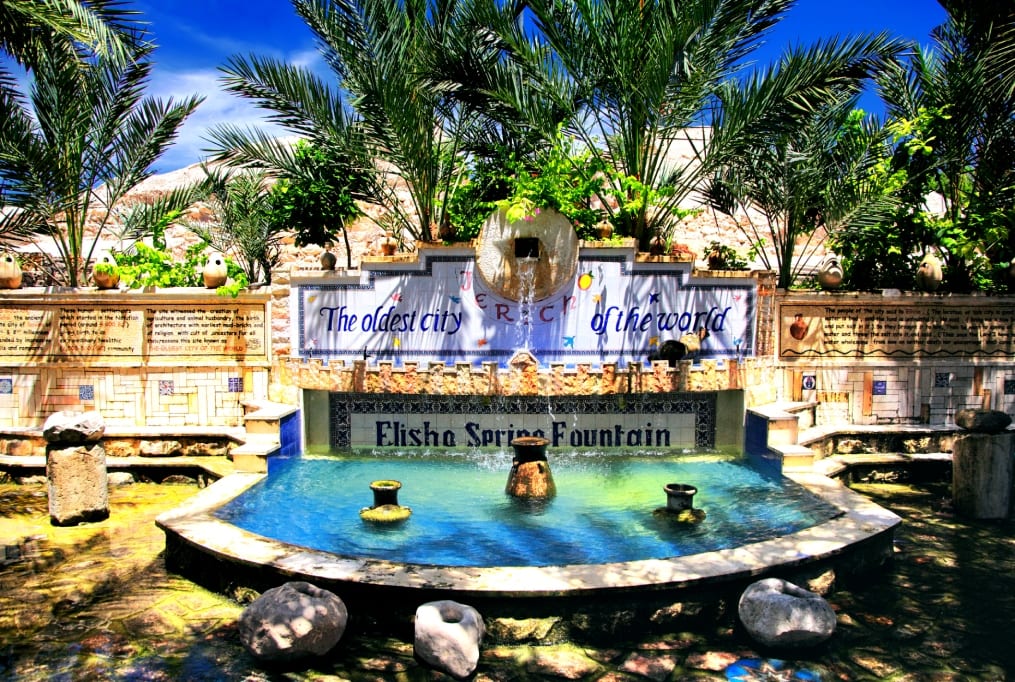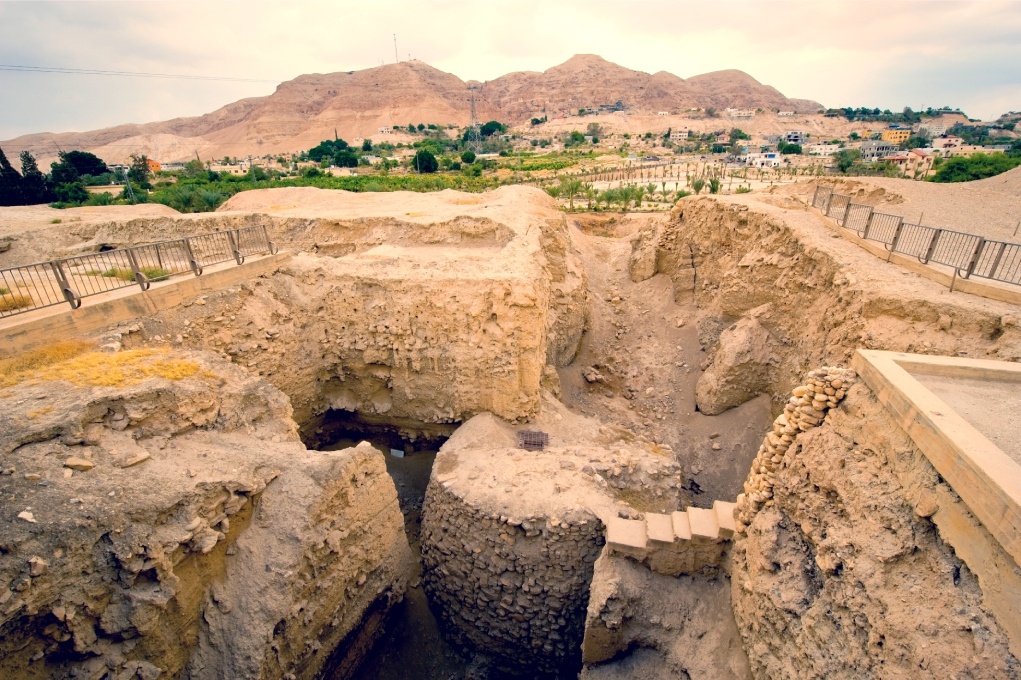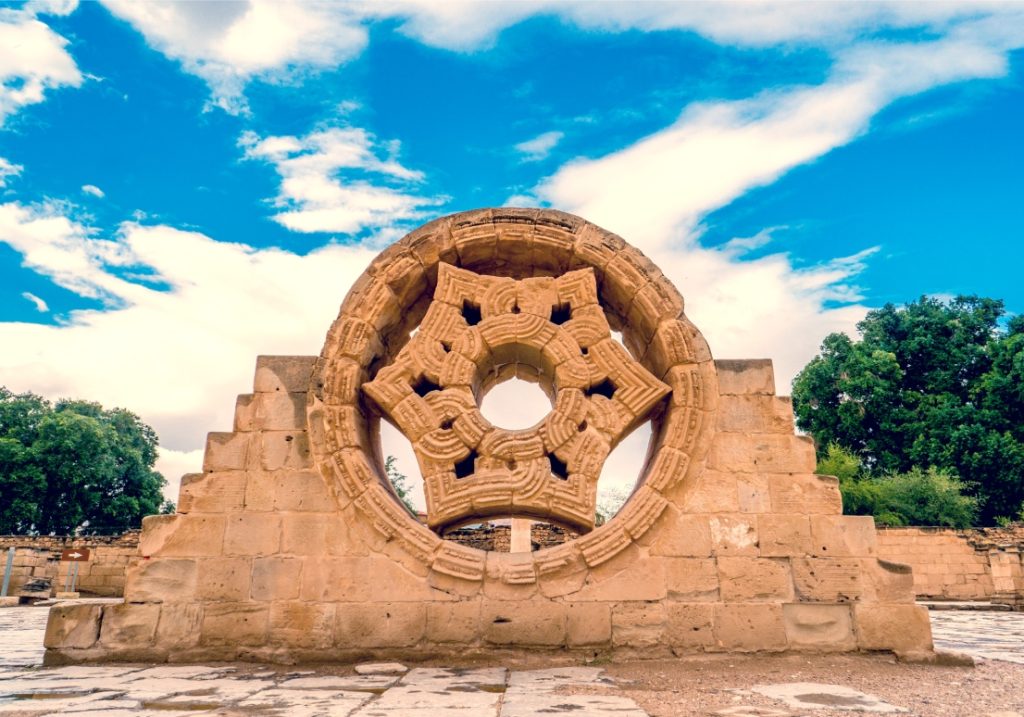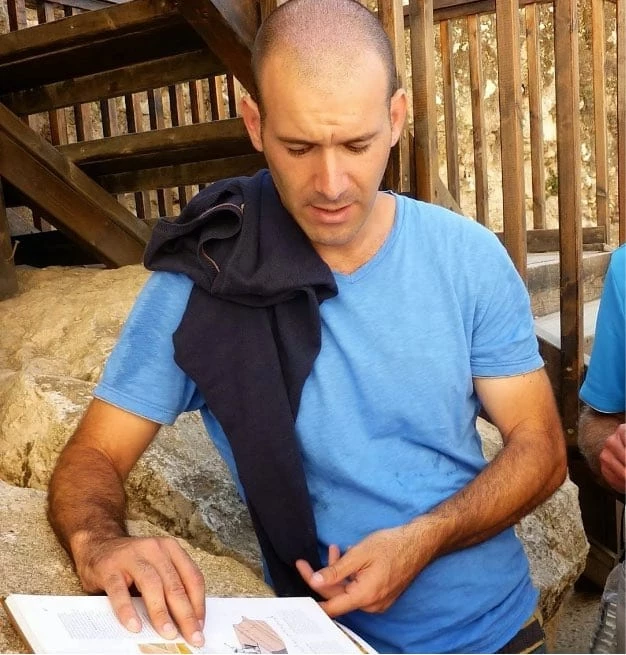Nestled within the ancient city of Jericho, a place steeped in history and tales of old, lies a source of wonder that has captured hearts for centuries — Elisha’s Spring. Join us on a journey into the heart of Jericho as we explore the captivating story and enduring mystique of Elisha’s Spring.

A Natural Oasis
Amidst the arid landscapes of the Jordan Valley, Elisha’s Spring stands as a verdant oasis, a testament to the beauty and power of nature. Imagine standing by the crystal-clear waters, surrounded by lush greenery and the tranquility only a natural spring can offer.
A Connection to the Biblical Past
So Elisha’s Spring is no ordinary water source; it’s intertwined with biblical history. According to tradition, the prophet Elisha worked a miracle here, transforming the waters from bitter to sweet. Moreover, this act quenched the people’s physical thirst and served as a spiritual renewal and transformation metaphor.
A Place of Reflection Visiting
Elisha’s Spring is not just a physical journey; it’s an opportunity for introspection. The centuries-old trees that flourish in its shade whisper tales of faith, resilience, and the divine. As you dip your fingers into the cool waters, you may feel a connection to the generations who have sought solace and inspiration here.
Ultimate Guide to Jericho

An Ecosystem of Life
Furthermore, the lush surroundings of Elisha’s Spring are beautiful and support a diverse ecosystem. Birds chirp, leaves rustle, and life thrives in this nurturing environment. It’s a reminder of the delicate balance between human history and the natural world.
A Sanctuary of Serenity
So amid a bustling world, Elisha’s Spring offers a sanctuary of serenity. The rhythmic flow of the water creates a soothing melody, inviting you to pause, reflect, and find peace in the simplicity of nature’s beauty.
Hisham's Palace

From Past to Present
Last, as you visit Elisha’s Spring, you become a part of its history. The same waters that flowed through the land in ancient times continue to flow today, bridging the gap between past and present. Each visitor adds a new layer to the tapestry of its legacy.
Experience Elisha’s Spring
So whether you’re drawn to the biblical significance, the natural allure, or the sense of tranquility, Elisha’s Spring promises an unforgettable experience. It’s a place where the stories of faith, miracles, and nature intertwine, inviting you to immerse yourself in a world of wonder.







